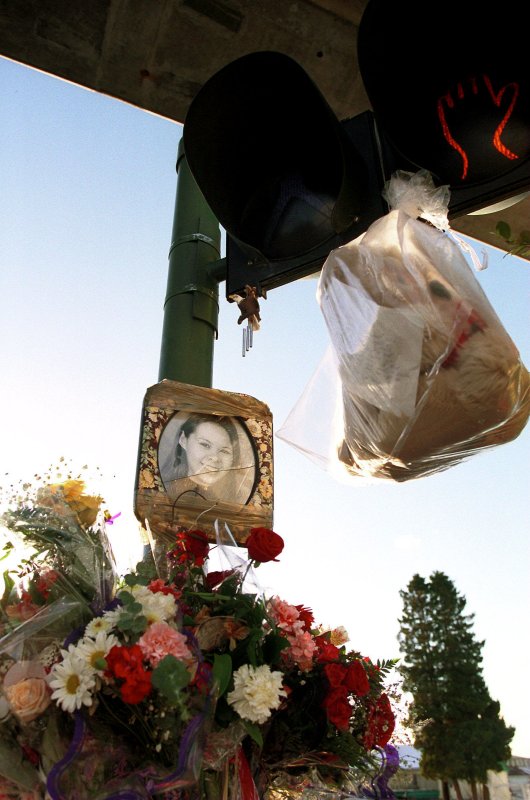'Near-death experience' reported by 20% of cardiac arrest survivors. Flowers and teddy bears pile up against the crosswalk signal pole at 24th and Naniamo in Vancouver, following the January 3, accidental death of 17-year-old actor Selina Hanuse. H. Ruckemann UPI |
License Photo
ANN ARBOR, Mich., Aug. 14 (UPI) -- Shortly after death -- when the heart stops and blood stops flowing -- rats display brain activity characteristic of conscious perception, U.S. researchers say.
Lead study author Jimo Borjigin, an associate professor at the University of Michigan Medical School, said approximately 20 percent of human cardiac arrest survivors reported having had a near-death experience during clinical death.
These visions and perceptions have been called "realer than real," previous research showed, but it remained unclear whether the brain was capable of such activity after cardiac arrest.
"We reasoned that if near-death experience stems from brain activity, neural correlates of consciousness should be identifiable in humans or animals even after the cessation of cerebral blood flow," Borjigin said in a statement.
The researchers analyzed the recordings of brain activity called electroencephalograms from nine anesthetized rats undergoing experimentally induced cardiac arrest.
Within the first 30 seconds after cardiac arrest, all of the rats displayed a widespread, transient surge of highly synchronized brain activity that had features associated with a highly aroused brain, Borjigin said.
"This study, performed in animals, is the first dealing with what happens to the neurophysiological state of the dying brain," Borjigin said.
"It will form the foundation for future human studies investigating mental experiences occurring in the dying brain, including seeing light during cardiac arrest."
The findings were published in the Proceedings of the National Academy of Sciences.















